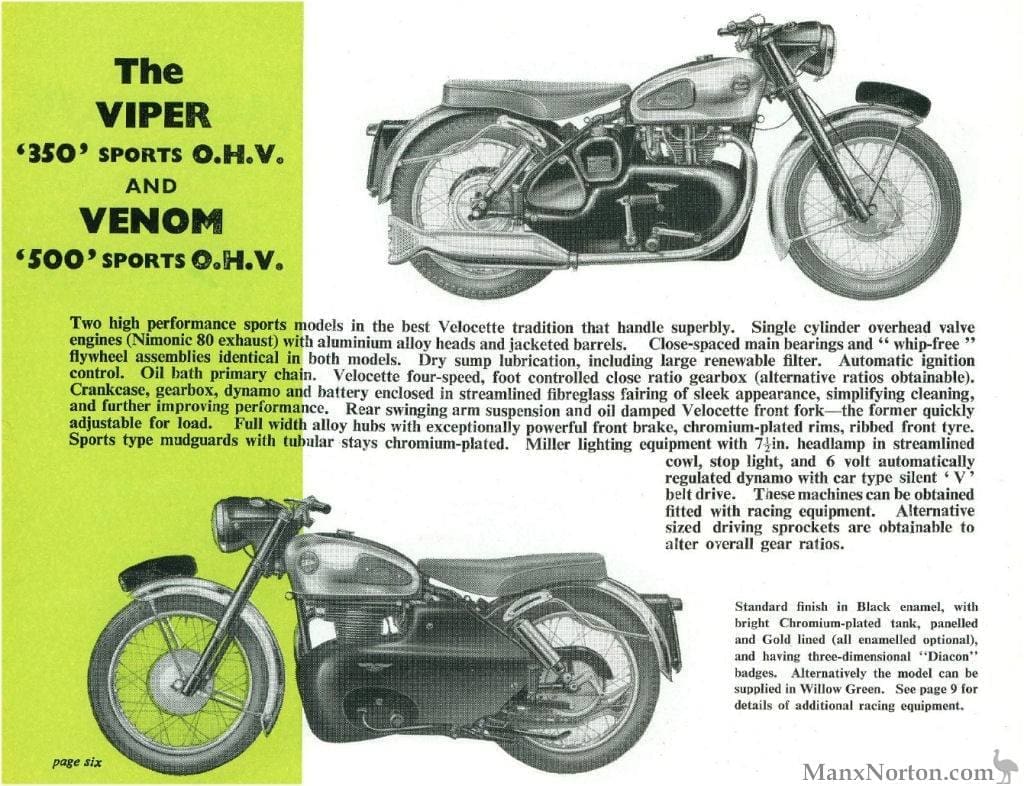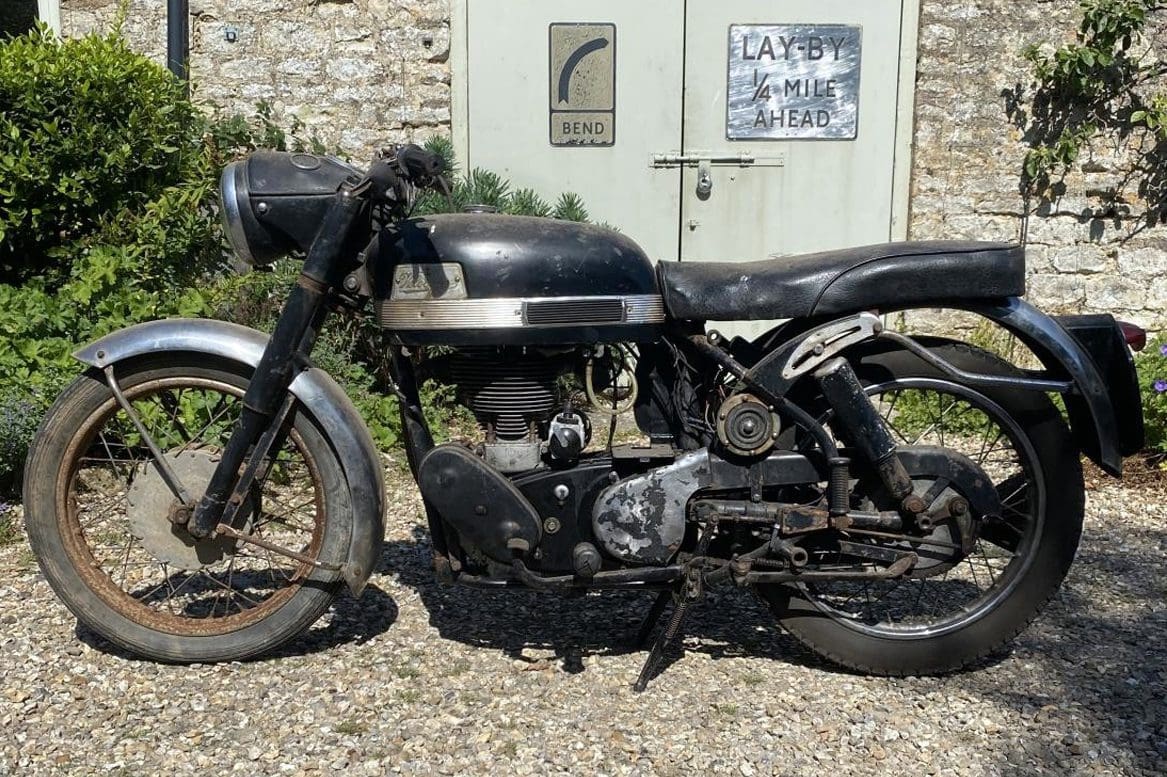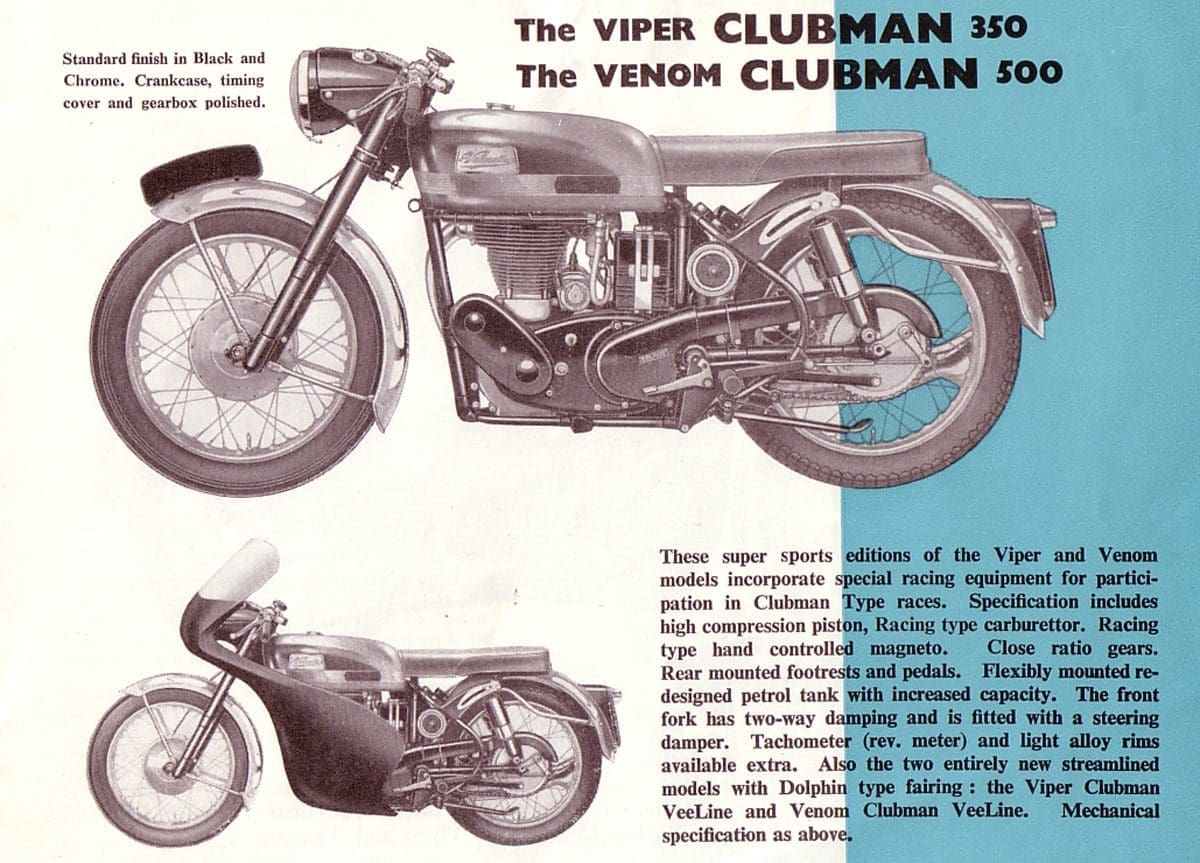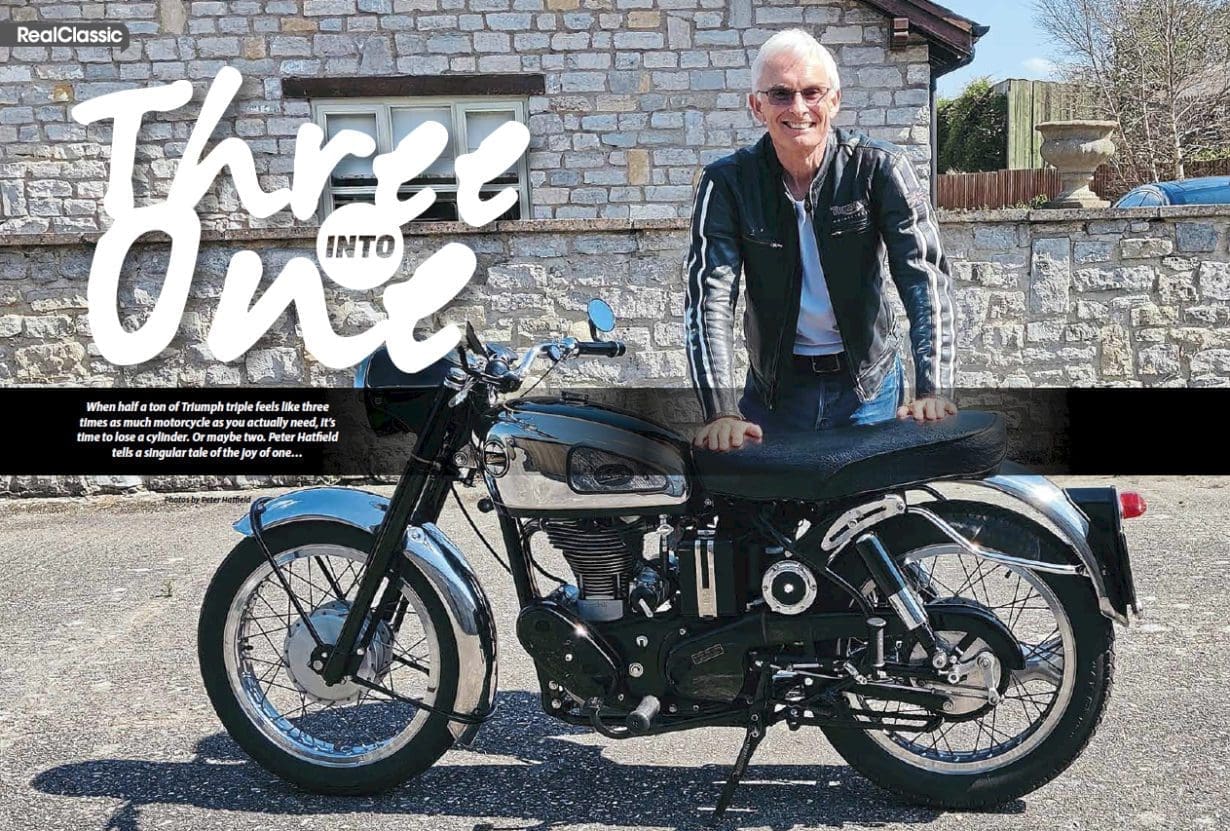In the August issue of the magazine, Peter Hatfield shares his experiences of owning a 350 sports Velocette single. Here’s some of the background to the model, to get you in the mood for the full-length feature…

Back in 1955, Velocette’s design engineer, Charles Udall, transformed the 350 MAC and 500 MSS all-rounders into sprightly sporters, the Venom and Viper using light alloy heads, hairpin valve springs, racing magneto, bumped compression and so on. For the 349cc Viper, this raised its power output from the MAC’s solid 15bhp by an entire 10 horsepower, putting the 350 sportster on a par with the MSS 500 and making 90mph a distinct possibility.
Historian Cyril Ayton always reckoned that the Viper was the unsung hero of the Velocette range. ‘The 350 deserved better… it was arguably the better engine for the good and sufficient reason that its 72 by 86mm top half was mounted on a double of the Venom’s bottom end – crankcase, flywheels, crank, the lot – with all the benefits in smoother running, and an even greater degree of “unburstability” thus conferred on the smaller unit.’

The test-riders of the time agreed. ‘One’s outstanding impression is of the exceptional flexibility and smoothness of the engine,’ said Motor Cycling. ‘It seems almost incredible that so much docile punch should be the product of no more than one cylinder and an 8.5:1 compression ratio.’
Early Vipers used an Alfin alloy barrel with a bonded cast iron liner (later replaced by a cast iron barrel), a split skirt piston giving a higher compression ratio and light alloy cylinder head with hairpin valve springs. ‘There is little to suggest to the uninitiated rider that the Viper is a 350,’ said The Motor Cycle. ‘Judging from the evidence of the speedometer, he might well conclude that he was riding a lively 500’.

Veloce’s rear suspension is mounted on two individual swinging arms, not the usual U-shaped set up. Slacken the middle bolt to adjust the shock absorbers and stiffen / relax the ride. Four road versions of the Viper were offered for sale: the Veeline with a streamlined Dolphin fairing; a budget Special model with a slightly lower spec, the Sports and the Clubman – the latter tuned to 29bhp at 7000rpm. Production totalled some 3700 Vipers, built between 1955 and 1968.
If you’re thinking of buying then be aware that clutch adjustment and starting rituals require patience and application. Check for any stripped threads in crankcase. Vibes should not be a problem (it’s normally a very smooth motor) so bracket / stay fractures suggest misaligned flywheels. Timing gears should likewise run quietly.

It’s also worth considering the 500 Velo Venom for more mid-range torque and higher top speed. BSA’s 348cc Gold Star offers comparable performance at higher prices. Velo’s MAC is the roadster / touring equivalent, more common than a Viper, and costs much the same.
You’ll find the full magazine feature in RC220, available as a digital issue or mail order delivered to your door





